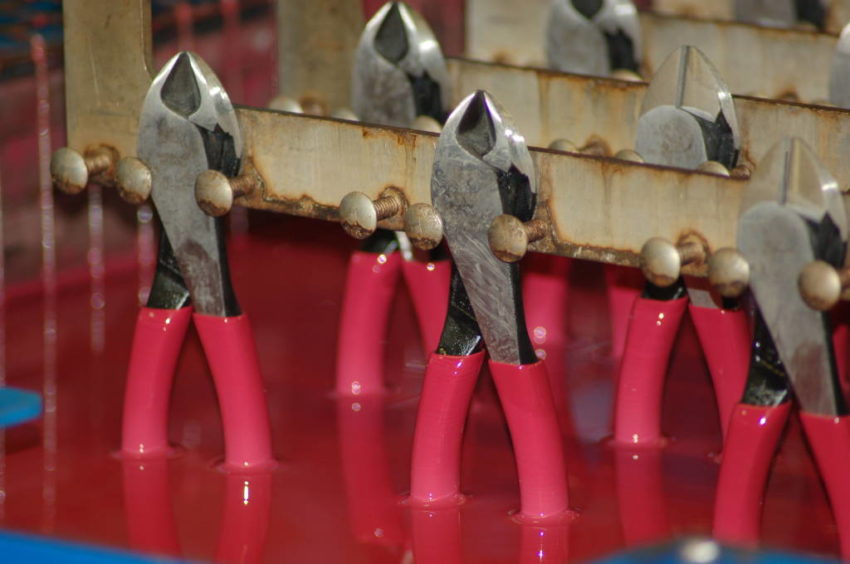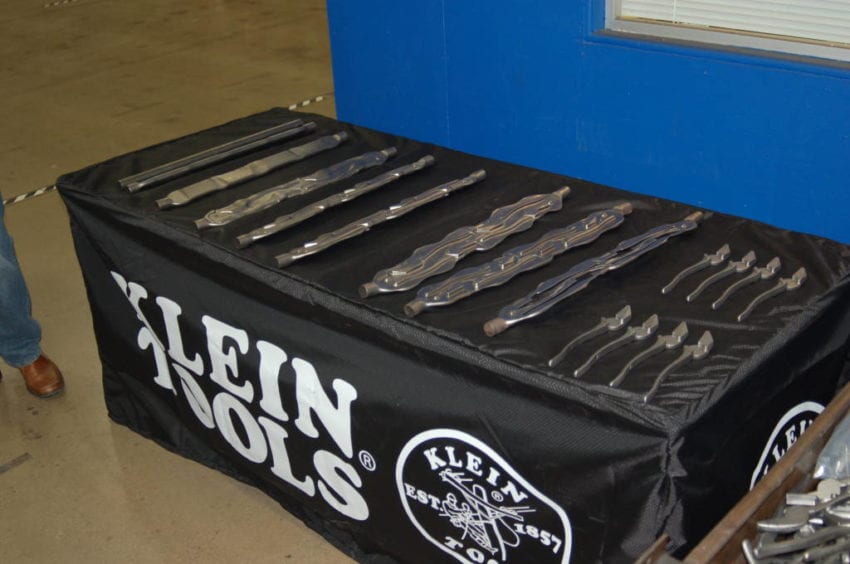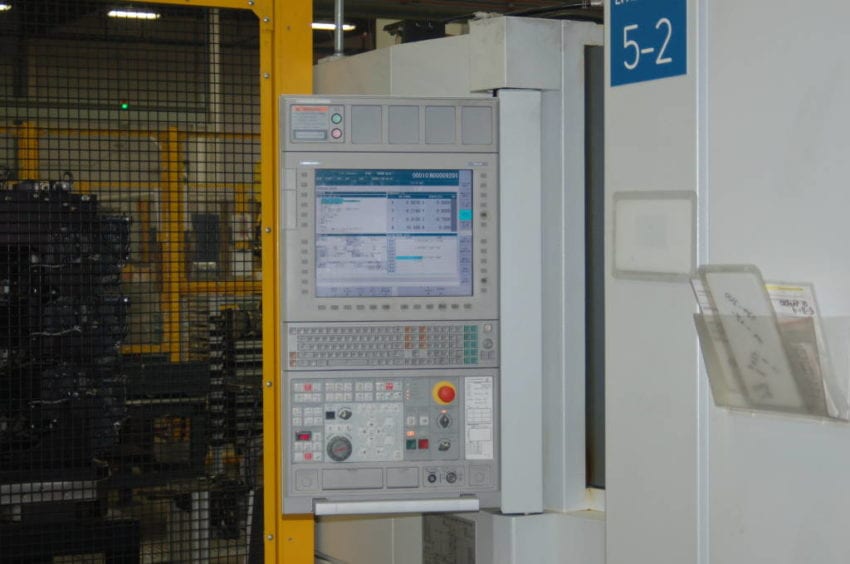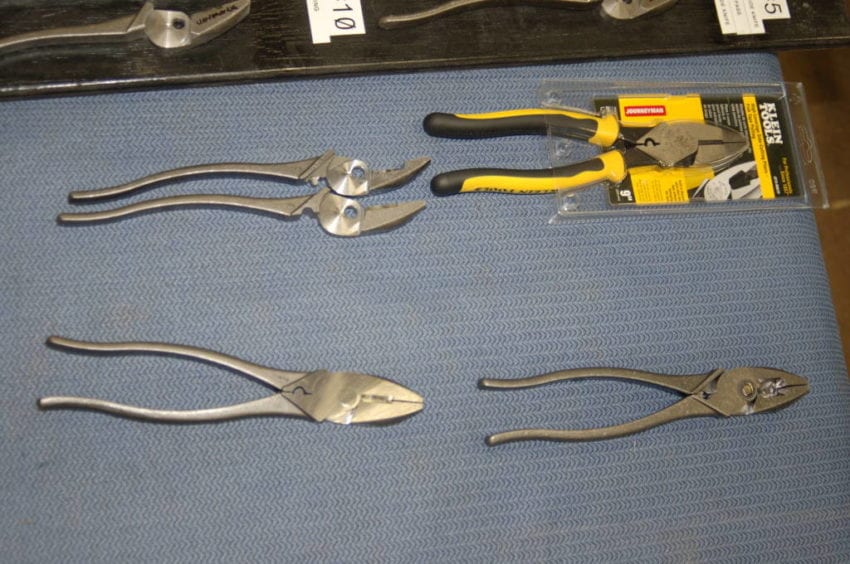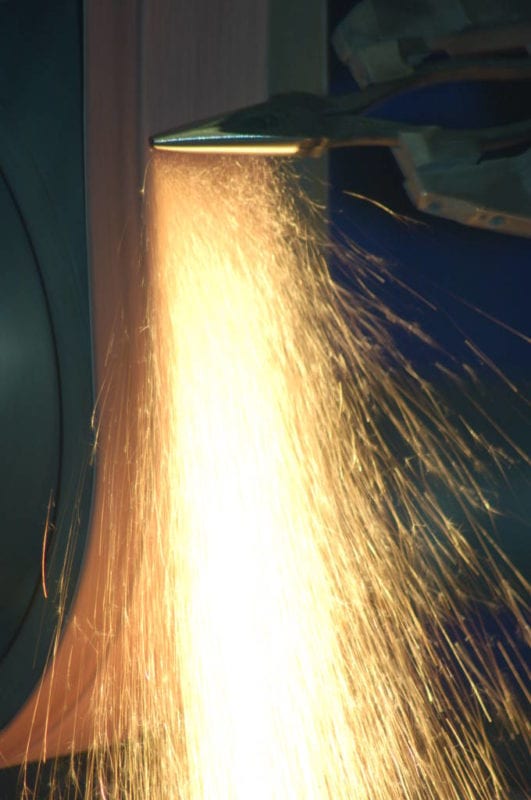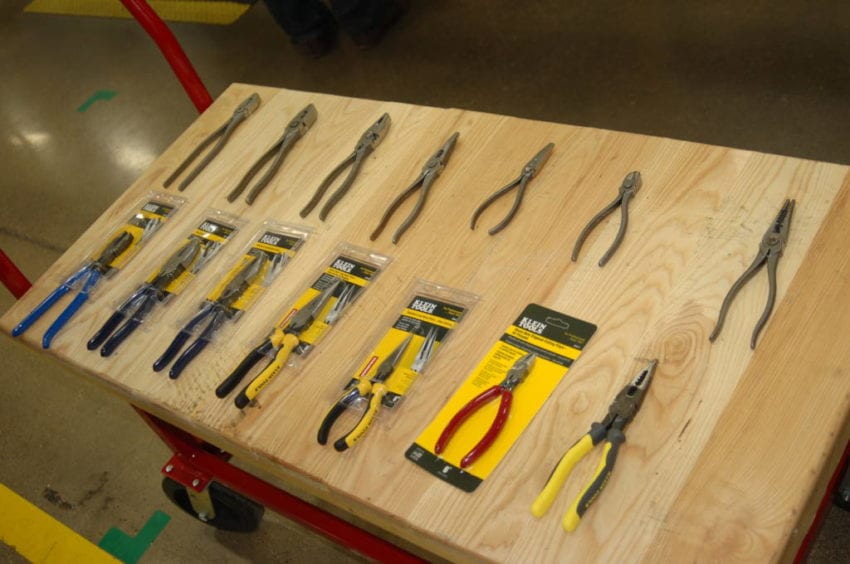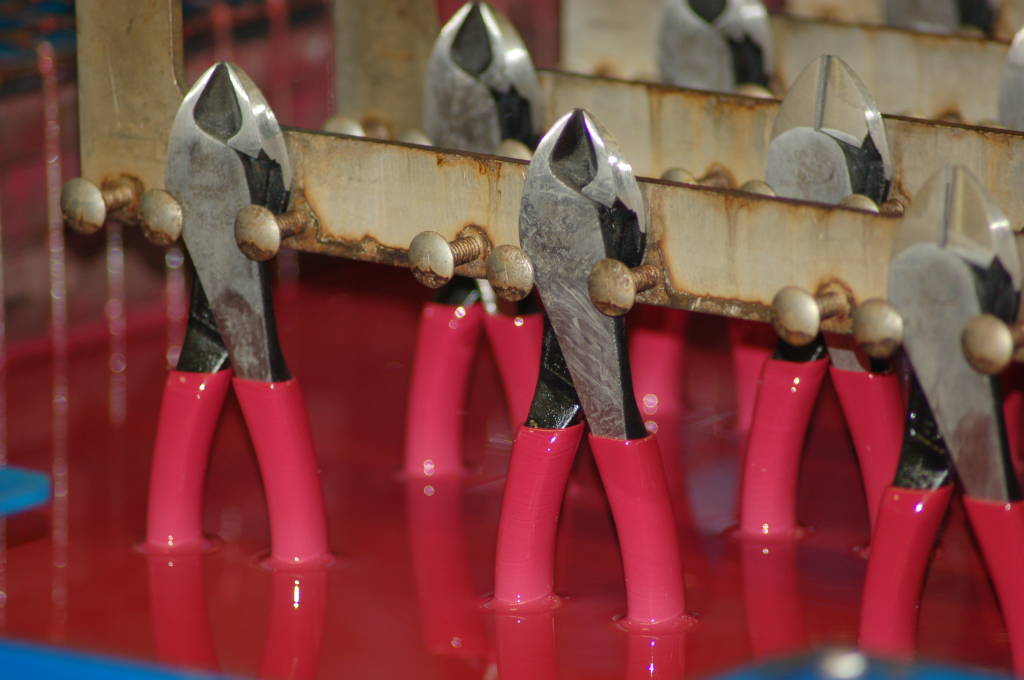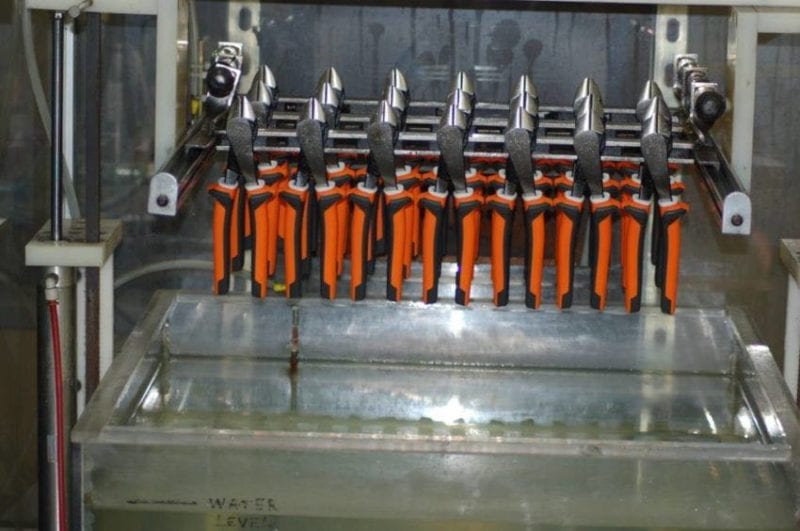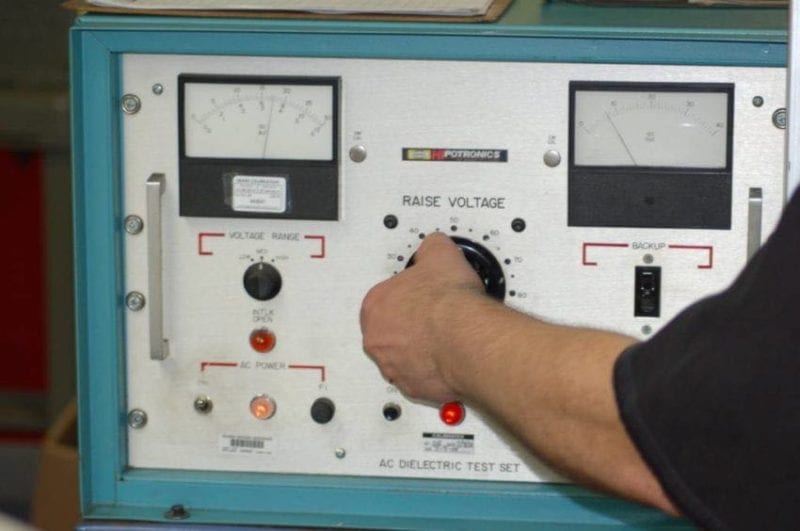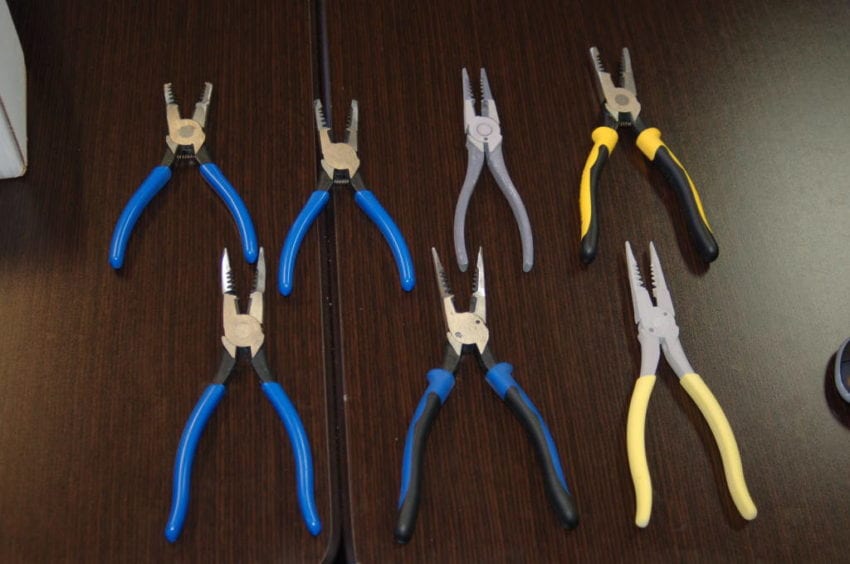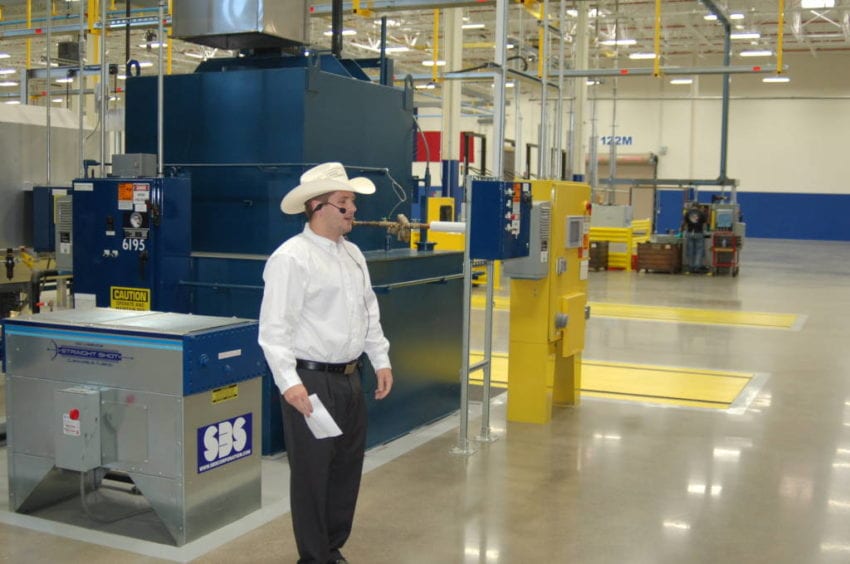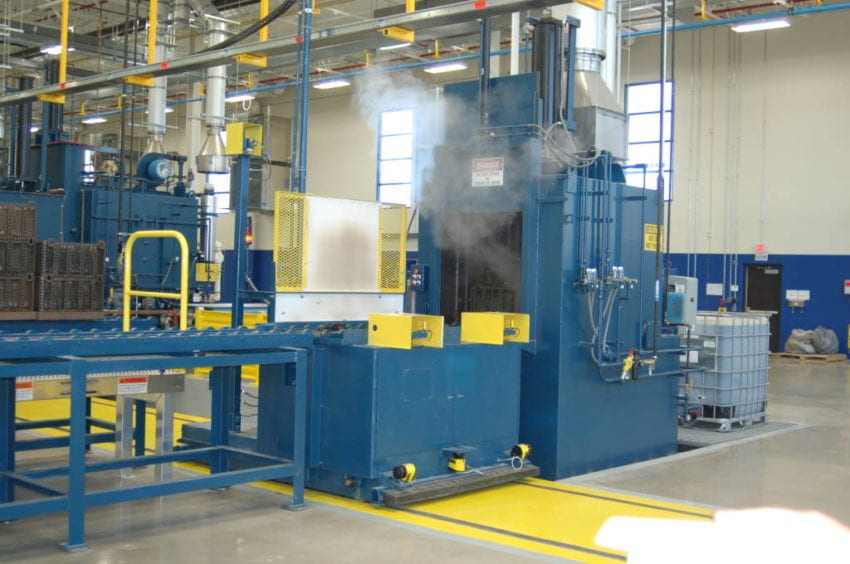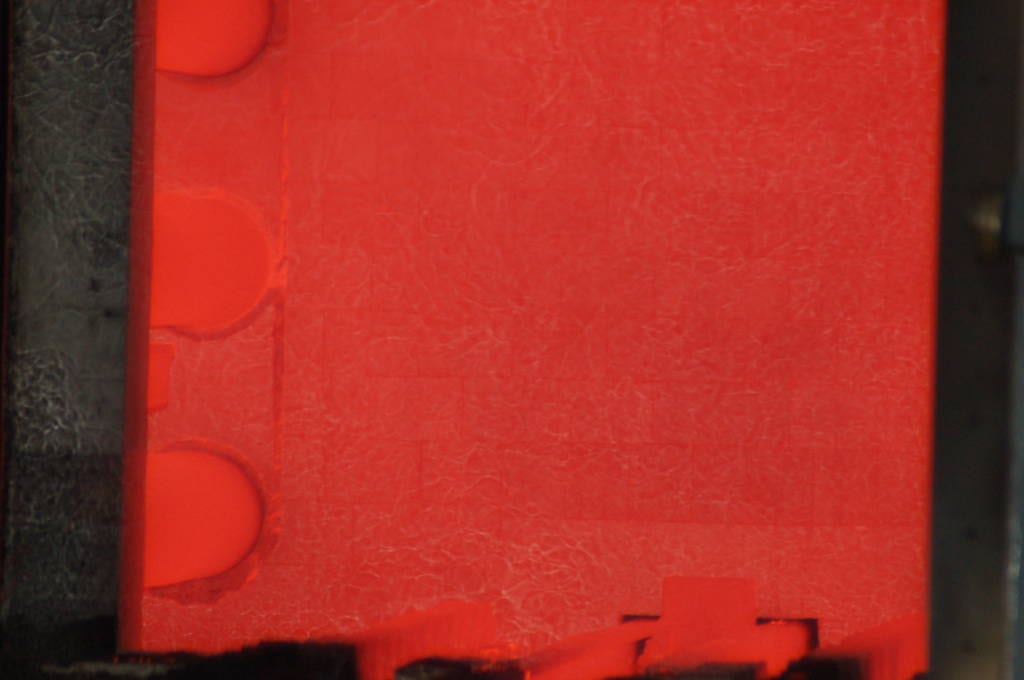I had the opportunity to tour the Klein Tools manufacturing headquarters in Mansfield, Texas. At the same time, I attended the grand opening of the Klein heat treatment plant. Klein focuses heavily on the electrical and utility industry when designing tools and remains committed to manufacturing in the United States. With those two manufacturing plants in Texas, Klein brought over 200 jobs to the local community. Klein seems intent on moving the small portion of the process currently overseas back into the USA. That bucks the trend among the major tool companies. For a big picture of the company, check out our article: Made in America: The Klein Tools Story.
Klein Tools Manufacturing Process
We wanted our plant tour to deliver an overview of the Klein tools manufacturing process. We’ve attempted to include as many details and photos as possible to tell the story.
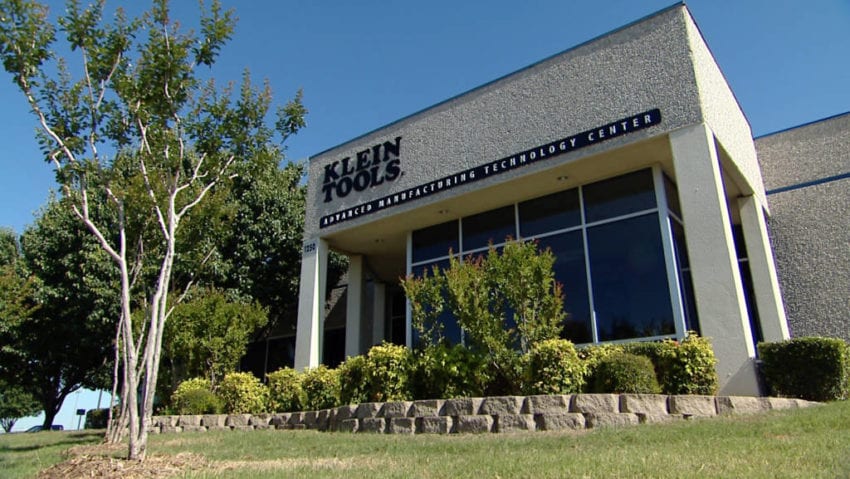
Klein starts with a 40-pound rod of steel and turns it into the opposite ends of a set of Klein pliers. The process heats these steel bars to working temperature in just 7 seconds. When they cut the handles out of the steel, the tolerance for variation is only 5/1000 of an inch. That makes for an extremely precise and repeatable tool. We noticed that, after cutting out the handles, a lot of leftover material remains. Klein recycles this to the tune of about 10,000 pounds of steel each month.
Computer-Controlled Forging Process
Not surprisingly, Klein controls the entire forging process with computers. We have no doubt it would have amazed Mathias Klein to see the improvements in efficiency compared to his blacksmith shop in 1857 Chicago. The Klein tools manufacturing process has certainly undergone changes over the years.
Robots machine the left and ride sides of each tool at the same time before dropping them in the rivet press. This ensures a perfect fit that gives Klein tools zero handle wobble. Following the rivet press, each tool is hot welded and moved on down the line. Here, you can see the various stages—from separate handles to riveting, welding, polishing, and packaging the hand tools for shipment.
Polishing and Grinding
Once the tools have completed the forging and assembly part of the Klein tools manufacturing process, one of the last steps is to polish them. This occurs before attaching the handles and final inspection. Like any good sanding process, the tools first go through a coarse grind. A fine finishing grind polishes them at the end.
Klein Tools Manufacturing – Adding the Handles
The Journeyman handles (the black and yellow ones) are injection molded at Klein’s Michigan facility and then shipped to Texas for assembly. We got to see the products produced in Texas before polishing set atop finished tools with the handles attached.
Tools not receiving an injection molded handle have a different process. Klein dips these handles directly, and the coating cools in place.
Klein’s insulated tools are rated to 1000 volts. Just to make sure each tool can actually handle that, Klein tests each one in a tank with 10,000 volts running through it!
We often take the manufacturing process for granted. In reality, every tool goes through an evolution of prototypes. With the Klein Tools manufacturing process, each product is tested, refined, and perfected before reaching store shelves. As an example, we got to see the evolution of Klein’s All-Purpose Pliers.
Klein Heat Treatment Plant Facility
The following day, we had the chance to tour the Klein Heat Treatment plant. Why heat treatment? During the forging process, the tools are still relatively soft. The heat treatment process hardens the steel to give the nearly unbreakable characteristic we’ve come to expect. David Klein gave us our first glimpse into the facility.
Once delivered to the Klein tools manufacturing facility, the first stage takes the tools through a pre-wash. This removes any debris that may have been collected along the way.
Following the pre-wash cycle, each tool is heated to roughly 1600 degrees for 1–2 hours. They are then submerged in oil that rapidly brings the temperature down to 140 degrees. This helps maintain the chemical integrity. From there, a post-wash takes the residual oil off before a temper furnace reheats the tools to 400 degrees. This removes the brittleness of the steel. Finally, the tools go through a bluing process and are sent a few miles down the road from the Klein heat treatment plant to get handles and be laser engraved.
While an endothermic gas replaces all the oxygen in the furnace eliminating the chance of open flame, sometimes it’s necessary to throw oxygen and nitrogen into the mix for burn-off purposes. The result of that is quite simply much cooler to look at.
From start to finish, the entire heat treating process takes about 6 hours. One thing that definitely stood out during the tour was that only about half the facility has equipment on it. The other half is empty space. While I personally would be tempted to start a company roller hockey league, Klein has plans to expand into that space. They currently are only treating pliers there, but that space will allow them to move the screwdriver and other tool treatment from Illinois under the same roof in Mansfield.

